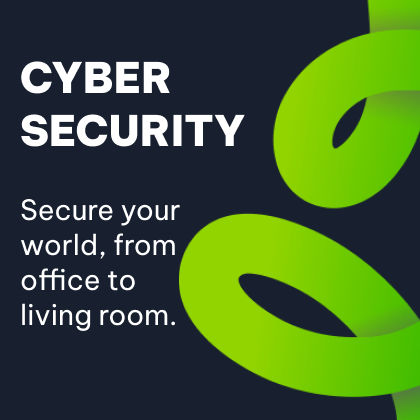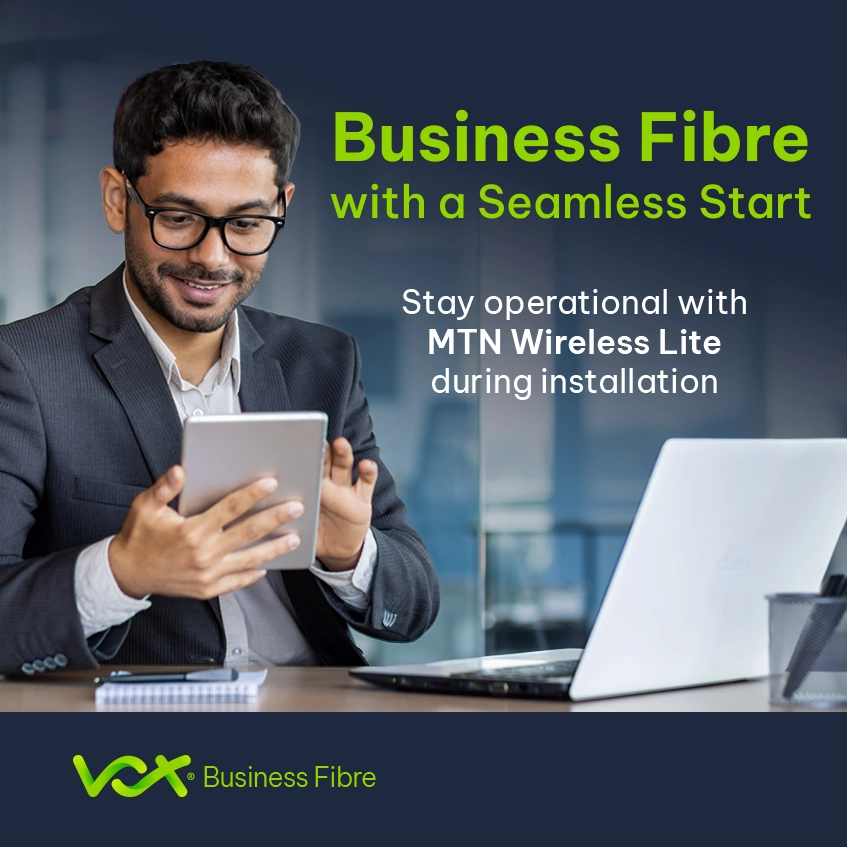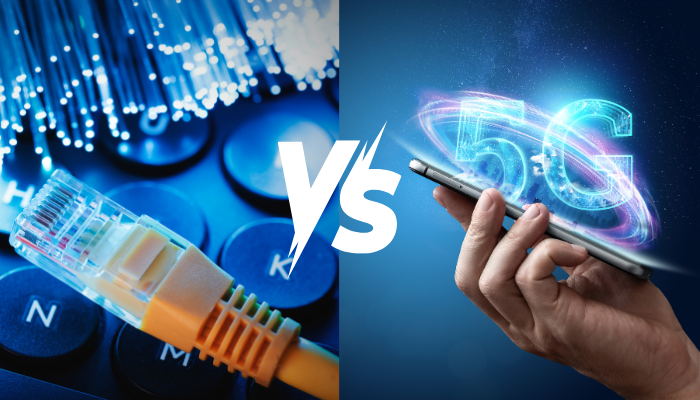In a world of constant innovation, two contenders make their claim to the throne.
The title in question? King of Connectivity.
Up until now, both have emerged as leading innovations destined to shape the future of communication. Fibre was firmly King Undisputed, and there was that incident with 5G and Covid (which we don’t talk about – but that’s firmly behind us). Today, both offer groundbreaking advantages yet vastly different applications, scalability, and uses. Today, we’ll unpack the strengths of each, and make a definitive decision as to which one is truly best.
Fibre Internet:
Often called the Backbone of Connectivity, Fibre Cables transmit Data as light through microscopic strands (known as, shock horror, Fibres). For years, it’s been the undisputed gold standard of Internet – offering unmatched speed and reliability.
Why it’s Awesome:
- More Speed, Better Bandwidth: You know the deal. Fibre offers up to 100Gbps speeds and more, meaning it’s a perfect conduit for data-heavy applications like 4K Video Streaming, Cloud Services, and Large Scale Enterprise Networks.
- Low Latency, Low Problems: Fibre generally boasts minimal delays due to its use of light-based Data transmission, meaning it’s perfect for gaming and real-time connectivity needs.
- Real Internet, Real Reliable: Remember the days of Copper Cables? Long gone. Fibre is less susceptible to interference, damage, or theft – meaning it’s ultra-reliable (and South Africa proof).
The Downsides:
- It Can Be Costly: Performance wise, Fibre is unbeatable. However, the process of getting there can be quite time-consuming and, more importantly, expensive. This makes accessibility, particularly in rural areas, a significant investment and reduces the potential reach thereof.
- Mobility Matters: Unlike more mobile alternatives, Fibre is primarily a fixed connection. It’s great at the home or at the office, but if you’re after on-the-go Connectivity, there’s not much Fibre can do (nor can you take it with you).
5G Network:
We’re way beyond the doomsday projections linking the pandemic to 5G towers. Today, the technology represents the fifth generation of wireless networks – promising faster speeds, improved latency, and the capability to support large numbers of connected devices.
Why it’s Awesome:
- Ultra–Speeds Made Mobile: With amazing download/upload speeds, 5G offers lightning quick browsing and streaming to smartphones or mobile devices – making it essential for those who need rapid connectivity on-the-go.
- Connectivity, and Beyond: since it’s designed to support as many as 1 million devices per square KM, 5G promises to be the backbone of smart cities or densely populated urban areas requiring Internet less prone to interruption.
The Downsides:
- Coverage Matters: The problem with 5G signals is that they can struggle to penetrate thick walls, or cover long distances. This creates a need for more towers (and we all know how well that went in 2020) and limits immediate expansion into suburban areas.
- It’s Codependent: You can’t unlock the full potential of 5G without a robust Fibre backbone – meaning it needs to be backed by proper cabling and infrastructure.
The Future: A Complementary Partnership
Rather than one technology replacing the other, Fibre and 5G will work hand in hand to shape the future of connectivity.
The question should then be reworked from “which one will replace the other” to “how will they work together” to shape the future of Connectivity.
First, Fibre:
The bottom line is that Fibre is revolutionary and will continue serve as the foundation blocks for years to come. As our Internet demands increase, no alternative at present has the capability (or scalability) required to meet these enhanced demands. Fibre does. From Cloud to Datacentres to home, business, and iOt needs, it’s primed to dominate the industry for generations to come.
Furthermore, it is pivotal to powering 5G networks – requiring a correlation to each 5G base station in order to maximise its potential.
Next, 5G:
5G is primed to dominate mobile connectivity and high-speed internet on-the-go. From innovating smart cities to vehicles, industrial automation, and healthcare, the high capacity/low latency power dynamic means it’s primed to be a cornerstone of a majorly connected connectivity ecosystem.
Our takeaway? The future will be HYBRID.
Fibre will continue to be the backbone, but 5G will serve as the central nervous system required to power the perfect body. They’ll serve to complement rather than compete with one another – with the endgame being seamless, fast, reliable Internet for both fixed and mobile users alike.
In South Africa, the debate “fibre vs 5G” keeps cropping up, but each technology serves different needs. Fibre internet remains the backbone for high-capacity, low-latency links (think datacentres, enterprise and fixed broadband), while 5G network takes mobility, dense device support and smart-city applications to the next level.
FAQs
Is Fibre faster than 5G?
Yes — Fibre can offer higher, more consistent speeds and symmetrical upload/download performance; 5G can be very fast on mobile but is more variable depending on coverage.
Do I need Fibre for 5G to work?
Essentially yes — 5G base stations typically rely on a Fibre backbone to deliver the full benefits of low latency and high throughput.
Which is cheaper: Fibre or 5G?
It depends. Fibre installation can be costly upfront, especially in rural areas; 5G fixed wireless can be cheaper to deploy in hard-to-reach areas but may offer different performance levels.
Will 5G replace Fibre in homes?
Unlikely. Fibre remains the best option for consistent, high-capacity home and business links. 5G is a strong complement, particularly where Fibre isn’t available.
Which is better for businesses?
For stable, scalable operations and cloud services, business Fibre is preferred. For mobility, IoT or temporary sites, 5G provides flexibility — most organisations benefit from both.















